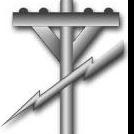PHYSICAL READINESS PROGRAM POLICY CHANGES CY2021 CYCLE, PLANK AND ROWER MODALITIES
-
👉 Latest News
-
Cycles 262/114 - TAR/SELRES E-7 Results Timeline
By Tony, in Chief Selection Board Forum | Results, Preparation, Records
- 0 replies
- 570 views
-
FY 25 CPO (E7) Selection Board
By Tony, in Chief Selection Board Forum | Results, Preparation, Records
- 21 replies
- 19,643 views
-
ANNUAL RECERTIFICATION OF SPECIAL DUTY ASSIGNMENT PAY
By Tony, in Enlisted Pay, Benefits & Allowance Forum | Navy
- 0 replies
- 537 views
-
FY25 Selected Reserve, TAR - E-7 Quotas
By Tony, in Chief Selection Board Forum | Results, Preparation, Records
- 0 replies
- 1,163 views
-
Cycle 262 - Active Duty E-7 Quotas
By Tony, in Chief Selection Board Forum | Results, Preparation, Records
- 0 replies
- 2,308 views
-



Recommended Posts
Join the conversation
You can post now and register later. If you have an account, sign in now to post with your account.
Note: Your post will require moderator approval before it will be visible.